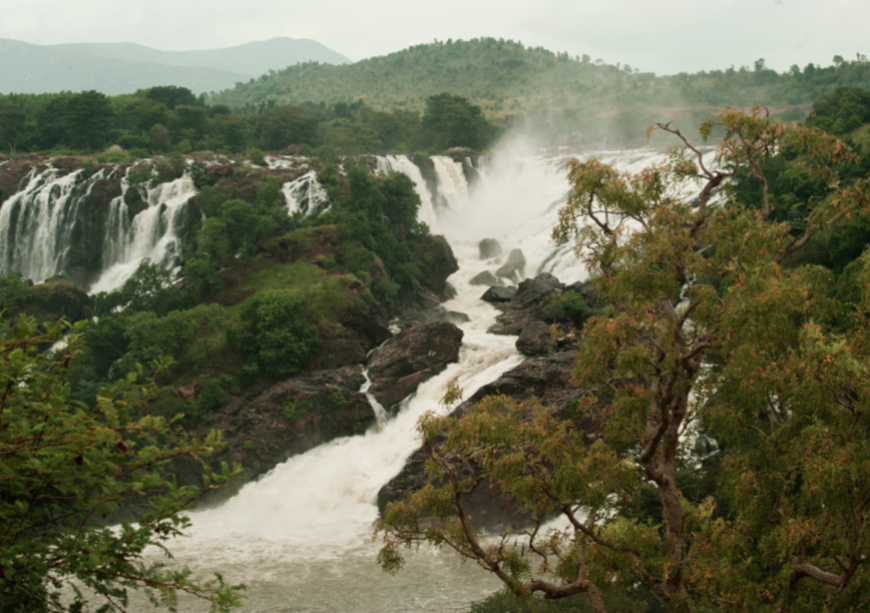
This article is a part of the essay series: World Water Day 2024: Water for Peace, Water for Life
India’s federal political institutions and their workings fundamentally shape the multi-layered dynamics of governance between the Centre and the states. One of the most salient issues of federal governance in India is the long-standing inter-state river water disputes, which have multifarious socio-economic and ecological repercussions. India has 25 major river basins spread across multiple states. Given that river basins serve as shared resources, it is imperative to adopt a collaborative strategy among states, with substantial involvement of the central government, to ensure the conservation, fair allocation, and sustainable utilisation of river water. Within India's federal framework, resolving interstate conflicts necessitates the Union government's intervention for a federal resolution at two fronts—amongst the concerned states and between the central government and the states.
However, interstate rivers in India have turned into arenas of conflict, driven by differing interpretations of property rights, flawed economic strategies regarding food security, the absence of an integrated ecosystems approach, and reliance on reductionist hydrology for water resource management. These disputes over ownership and management of river water have been around since Independence, marred by historical, institutional, and political complexities, leading to prolonged delays in resolution.
In recent times, escalating water scarcity, growing urban and rural freshwater demands, and contentious political dynamics have further intensified the problem.
Understanding the structural ambiguities
It is crucial to first underline the persisting challenges in the existing discourse on the issue. There are three major structural ambiguities that currently affect the governance dynamics of inter-state river conflicts in India: Federal-jurisdictional, historico-geographical, and institutional. These ambiguities are interrelated and have shaped the constitutional design, institutional response, and political interaction on Interstate Water Disputes (ISWD) in India.
Firstly, there is ambiguity surrounding the legislative and constitutional framework for addressing river water disputes in India, resulting in a blurred division of power between the Centre and states regarding interstate river management, leading to jurisdictional ambiguity. Colonial legislation such as the Government of India Act 1919 and 1935 had set the regulatory discourse influencing the post-Independence constitutional setup. Such a discourse suggests that while states have the right to use river water, the Centre is responsible for regulating interstate river disputes. This constitutional division often lacks clarity, leading to confusion over jurisdiction in interstate water disputes. Given the dynamic and interconnected nature of interstate river usage, the Centre's role in ensuring equitable use remains contentious, contributing to delayed resolution and prolonged conflicts over interstate river management.
Second, besides the legal-constitutional mandate, historical and geographical factors contribute to ambiguity in interstate river water governance. Colonial-era border adjustments and the merging of princely states in the post-Independence period have led to entrenched disputes among diverse states. India was comprised of diverse states, which included the provinces that were directly under British rule as well as the ones which were princely states.
Rushed decisions to merge princely states, concerns of national unity, and linguistic considerations were the overarching drivers for territorial boundary changes, which often neglected historical heterogeneity. This political redrawing of boundaries undermined the natural diversity of states and ecological and geographical dynamics.
The states in India were formed with borders drawn along political lines, which led to unresolved aspirations within fractured constituencies, as noted by Simhadri's Telangana study. The nation's unity took precedence over resource distribution, including potential river disputes. During the Constituent Assembly Debates, inter-state river disputes received minimal attention due to the paramount concern for national unity, particularly in the aftermath of post-Partition violence. Subsequent state boundary alterations based on cultural and political factors overlooked historical and ecological dynamics, complicating jurisdictional and resource-sharing agreements, thus catapulting such interstate river disputes to the forefront. This leads to inter-state political contestation and conflicting property and user rights claims over river water. For instance, the Kaveri dispute reflects conflicting understandings of property rights. Experts attribute legal and jurisdictional tussles over inter-state river water to colonial legacies persisting in contemporary state structures despite territorial redesign in the post-Independence era. The use of colonial era rules and treaties for present-day arbitration further complicates matters.
Third, the adjudication of interstate river disputes has created institutional ambiguity between the tribunals established by the Centre and India's Supreme Court. Unlike the 1935 Act, Article 262 of the Indian Constitution prevents the Supreme Court from intervening in interstate water disputes, while Article 136 allows it to hear appeals against tribunal decisions. Consequently, although Article 262 restricts the Supreme Court's involvement, Article 136 enables it to hear appeals and oversee tribunal rulings. This dual provision establishes uncertainty over whether tribunals or the Supreme Court hold ultimate adjudicatory authority in interstate river disputes in India. The tribunals were initially seen as an innovative approach in 1956, but they have not succeeded in their intended purpose. One issue is the difficulty in reaching a final decision as per Section 5(2) of the ISWD Act, 1956, and the provision for questioning this decision through Section 5(3), leading to a cycle of endless questioning. Experts have highlighted several operational issues with the tribunals, such as irregular sittings, functioning outside the regular court system, and infrequent hearings. Despite the 2002 Amendment aiming for a time-bound completion of proceedings, tribunals continue to operate in a relaxed manner.
The imperative of federal dialogue
Throughout history, it has been evident that there has been a lack of emphasis on exploring the potential of political negotiation and mediation to achieve consensus among states and the Centre on water disputes within India's federal structure. ISWDs involve not only federal governance institutions but also active political actors within a competitive democratic governance system. Therefore, the focus should shift from solely prioritising technocratic approaches to paying heed to democratic processes. ISWDs are not just conflicts over resources; they are also tied to complex dynamics of ethnic and regional identities, as well as conflicts over redistribution of resources—factors that drove and shaped the politics of territorial state-making and eventual politics of development. Understanding ISWDs and delving into potential ways for resolution requires recognising how they are embedded within a broader political context. As the discourse on the interstate river water disputes has metamorphosed into a larger political narrative of identity, it is deeply embedded in the domain of politics.
While ideally depoliticising such vital issues is desirable for initiating bold reforms, the long-term sustainability of such a solution is challenging due to their entrenched political nature without a broad-based consensus involving the major stakeholders.
Need for an institutional revamp
To find a durable resolution, consensus on interstate river water disputes is needed at two levels: Federal and electoral. At the federal level, trust-building is crucial between the Centre and states, as well as among states themselves. This requires fair representation, and bipartisan and multilateral dialogues amongst all federal actors. Historical mistrust has hindered such negotiations, especially between opposing party-led governments at state and national levels, affecting existing institutional mechanisms. Institutional confidence-building is vital for federal consensus on ISWDs.
Given India's evolving political landscape, understanding interactions between the Centre and Opposition-ruled states is essential for effective river water governance. At the state level, electoral consensus is critical, particularly where disputes are entwined with regional identity and autonomy. Sensitising the electorate to the costs of prolonged disputes and showcasing benefits of mutually-acceptable conflict resolution is necessary. Positive politicisations by engaging civil society, academia, and media can foster mass mobilisation for building conducive public discourses around conflict resolution. Strengthening institutional mechanisms and accommodating political sensitivities are key to finding a long-term solution for ISWD governance in India.
Ambar Kumar Ghosh is an Associate Fellow at the Observer Research Foundation.
The views expressed above belong to the author(s). ORF research and analyses now available on Telegram! Click here to access our curated content — blogs, longforms and interviews.




 PREV
PREV



